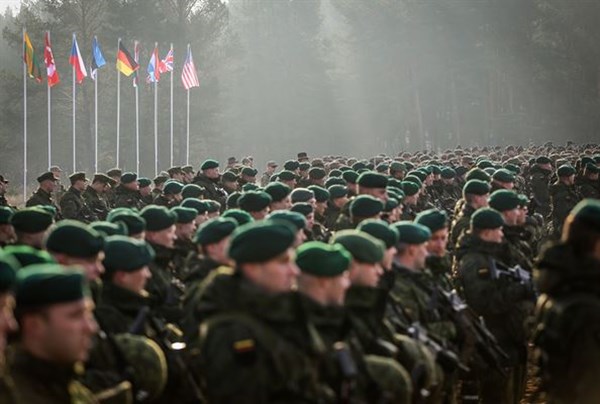Kremlin: NATO is preparing for large-scale conflict with Russia
NATO is preparing for a large-scale military conflict on its eastern borders, said Valery Gerasimov, Chief of Russia’s General Staff.
According to the Russian general, this is indicated by the military exercises in Europe and the redeployment of alliance troops in the east.
Russia is designated an enemy in NATO countries’ military doctrine, Gerasimov noted at a briefing for foreign military attachés.
During the NATO summit in December, the bloc confirmed that it is trying to learn how to deploy troops on the Russian borders as quickly as possible, he added.
The global situation remains unstable, and though the preconditions for a major war to break out have not been met, a large-scale military conflict is not impossible.
“Under such conditions, one cannot exclude the possibility of crises emerging, which could get out of control and escalate into a large-scale military conflict. The trends of the changing forms of armed warfare allow one to conclude that the wars of the future will be waged in all spheres. This is confirmed by the decisions of the NATO summit in London, where space was recognized as the fifth operating environment,” Krasnaya Zvezda cites Gerasimov as saying.
In spring 2020, the US Defense Department will send 20,000 soldiers to Europe for NATO exercises which will be the largest since the end of the Cold War, a senior Pentagon representative told Reuters last week.
According to the source, the decision was made in order to emphasize the US’s commitment to keep its obligations towards the other countries in the bloc. The maneuvers, scheduled for April-May next year, will be conducted in Germany and will be the largest since Exercise Reforger in the late 1980s.
At the time, in the wake of the collapse of the Soviet Union and the breakdown of the Warsaw Pact, the maneuvers were held under the slogan “Return of forces to Germany”. Now, their purpose is to demonstrate NATO’s ability to rapidly mobilize forces, said Major General Barre Seguin, who oversees joint alliance operations from the headquarters in Belgium.
A total of 37,000 soldiers will take part in the exercise, more than half of them US troops. NATO will test the option of rapidly deploying US troops across the Atlantic Ocean to Belgium, and from there marching east to Germany and Poland.
“We have not demonstrated this ability to rapidly mobilize and deploy forces across the Atlantic in the last 25 years or so,” said Seguin.
The last NATO summit was held in the UK from December 3-4 on the bloc’s 70th anniversary, and concluded with the adoption of a declaration in which the 29 countries emphasized the “inviolability of collective defense”, the “inseparability of the tie between Europe and North America”, and the principle that an attack on any alliance member will be considered an attack on all the rest.
